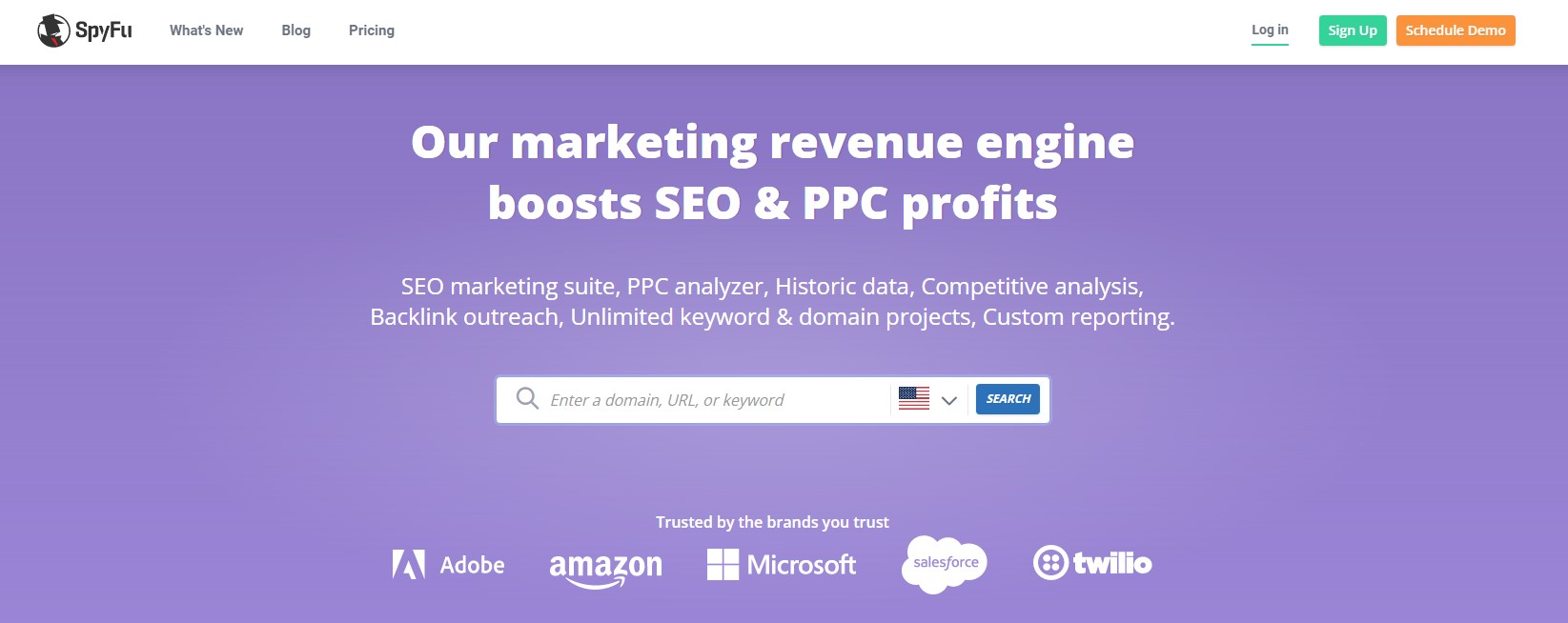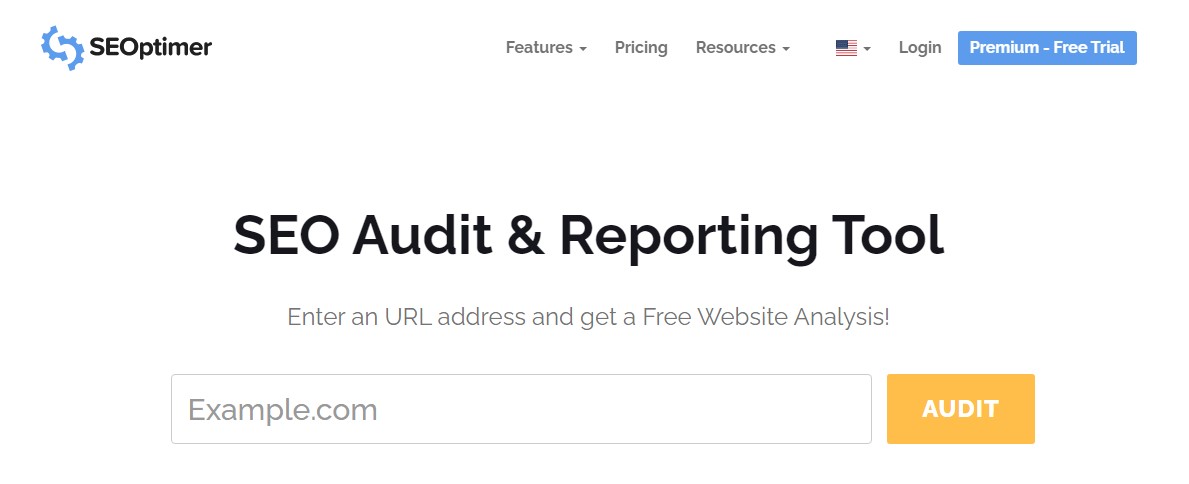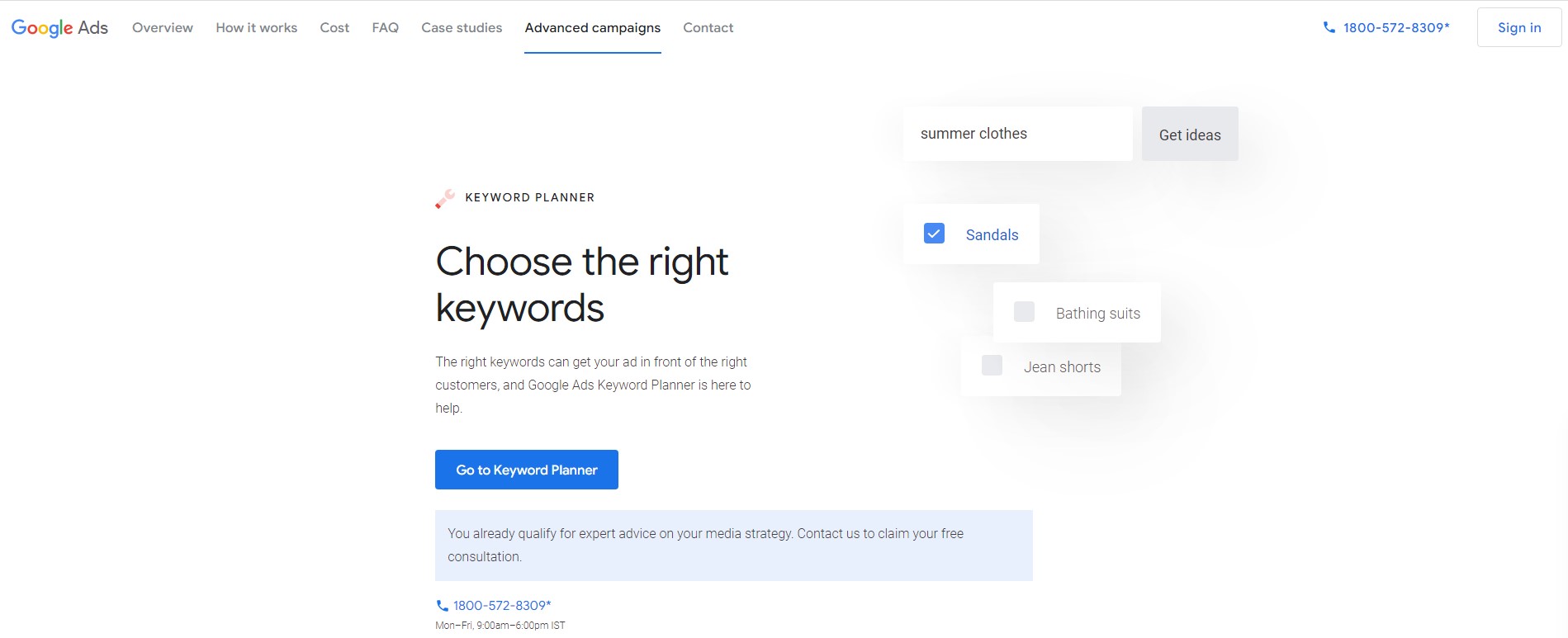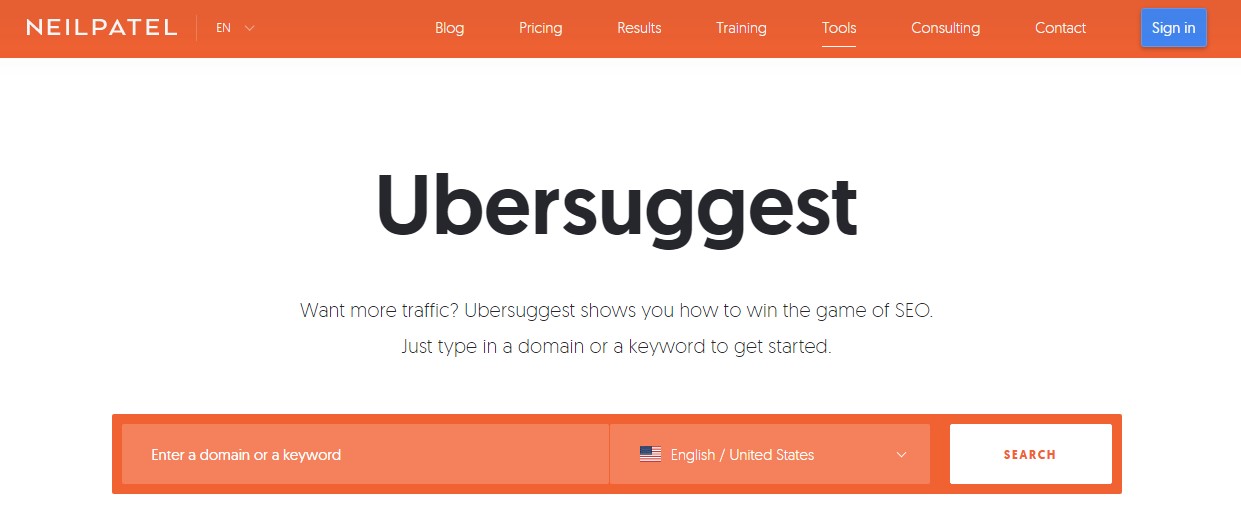
A Guide for SEO Competitor Analysis using WordPress
Generating organic traffic on the web is a highly competitive ball game. It might be more efficient to look at your competitor’s strategy rather than guessing the keywords and hoping for the best. With SEO competitor analysis, you can get helpful information about what is driving traffic on your competitor’s website, build on that and outperform them with the correct implementation.
What is SEO Competitor Analysis?
SEO competitor analysis is the process of finding the strengths and weaknesses of your and your competitors’ SEO.
You are attempting to identify gaps between you and your rival, much like in a regular competitive study. But you’ll concentrate on SEO strategy rather than a marketing strategy.
You can benefit from a competitive analysis by:
- Compare your current SEO performa.
- Determine where your SEO strategy needs to be improved.
- Identify any flaws or weaknesses of the competition.
- Discover the winning tactics of your rivals.
- Find best WordPress SEO Optimization Strategies.
How to do an SEO Competitor Analysis?
You can use a WordPress plugin like AIO SEO (All in One SEO) or an SEO tool. Both of these methods are explained in detail.
Method-1 Performing an SEO Competitor Analysis Using WordPress Plugin:

- This is the easiest way to conduct SEO competitor analysis in WordPress. Trusted by over 3 billion businesses, it’s safe to say that the AIO SEO plugin is regarded as the best SEO tool for WordPress. It lets you optimize your site without any technical knowledge or help from an expert. So, we will specifically look at conducting SEO competitor analysis through AIO SEO.
- AIOSEO’s free version includes the SEO Analysis tool, but you can go for the premium version if you want extra features like schema markup, redirection manager, etc.
- Firstly, you will need to install and activate the AIO SEO plugin on the website. Upon successful activation, it will launch its setup wizard. Click on the ‘Let’s Get Started’ button to continue.Proceed to your WordPress dashboard and select All in One SEO >> SEO Analysis. Click on the ‘Analyze Competitor Site’ tab. Then you will get the option to enter your competitor’s URL.You can click the ‘Analyze’ button after filling in the URL.
- Once analyzed, it will show the overall score of your competitor’s website along with a preview of their Meta title and Meta description. It also gives you the keywords they are targeting on their website. Next, AIO SEO analyzes its website on different parameters, highlighting critical issues and mentioning things working well.
- ‘Basic SEO’ action is an easy way to start and compare the differences between your website and their website. In this action, you see whether the competitor is using image alt attributes or not, how many internal and external links can be found on their page, and what keywords they are using in their Meta tags, H1 and H2 tags. These findings can be used to improve your website’s ranking and increase organic traffic. For example, If your competitor is not using image alt attributes, then you can take advantage of that by using alt attributes for optimizing the images on your site. This will give you the edge over your competitor’s image search results.
- Next, you can scroll down to the ‘Advanced SEO’ section, where you can find whether the www and non-www versions of the URL redirect to the same website, if the page contains any meta tag or no index header, or if the competitor uses a canonical tag or not. Furthermore, you can also find out if the competitor uses a robotxt.txt file to improve their website’s indexing and crawling. All this can give you a detailed comparison based on multiple parameters so you can devise a strategy to outrank your competitor accordingly.
- AIO SEO also has a ‘Performance’ section, which shows your competitor’s ability to speed up their website. It’s a fast-paced world, and if you can get your site to load quicker in comparison, then it can give you a significant advantage. A ‘Security’ section in AIO SEO also detects malware or other harmful programs, resulting in a lower ranking in search engines. It also checks whether the competitor uses HTTPS or HTTP as HTTPS gets priority from search engines. Another critical analysis is to check if directory listings are disabled or not. Disabling them can protect your sensitive information from hackers. Use this to conduct SEO competitor analysis.
METHOD 2: Perform an SEO Competitor Analysis using SEO Tool:

- SEO tools can also be used to conduct SEO competitor analysis. Semrush is one of the most popular SEO analyzer tools available on the web. It is simple and effective to use; therefore, professionals and beginners can use it without issues.
- ‘Domain Overview’ section in Semrush under the competitive research menu is where you can start by entering the URL of your competitor’s website. Once you click on ‘Search,’ it will give you an overview of their website. Factors like organic search traffic for the month, backlinks, authority score can be checked here. It also shows from which country that particular website generates the most traffic. It is beneficial tool to conduct SEO competitor analysis.
- Reports like top organic keywords, main organic competitor, number of SERP features, and top paid keywords are also displayed in the ‘Domain Overview’ section. Semrush allows you to check these reports in detail to better insight into their SEO strategy.
- The ‘Traffic Analytics’ section in Semrush gives you an even more detailed analysis of your competitor’s traffic source. You can check their bounce rate, unique visitors, and average visit duration to understand better how the audience responds to their content. You can also identify which source attracts the most visitors. For example, if social media is bringing a lot of traffic to your competitor, you can implement strategies that focus on boosting traffic from social media platforms.
- An ‘Organic Research’ section gives an overview of your competitor’s top pages, keywords, SERP features, etc. Semrush also shows whether the keyword was transactional or informational, which can help you identify new keywords to boost your ranking.
- The Keyword Gap tool in Semrush lets you enter up to 5 domains and then compare keywords between your website and your competitors. You can go to the ‘Missing’ keyword report to figure out keywords used by your competitor but not by you. This also lets you identify new keywords that are working for your competitor. Along with keywords, you can check where your competitors are getting backlinks from. Similar to the ‘Keyword Gap’ section, the ‘Backlink Gap’ section also lets you enter up to competitor websites and compare them. Since backlinks play an important factor in the ranking system, identifying new opportunities to get new backlinks on your competitor’s website can significantly boost your ranking. There is a ‘Lost’ filter under the ‘Backlinks’ tab, which displays all the backlinks that are no longer available on your competitor’s website. Pitching your landing page to replace them can positively affect the traffic to your website traffic.
Follow this Guide to Competitor Analysis for SEO.
What are the best free SEO tools To Analyze a competitor’s Website?

These tools, employed by a sizable community of SEOs and digital marketers, will give you actionable data, backlinks, keywords, spam scores, website analysis, and much more.
1. SpyFu

This SEO Competitor Analysis Tool aids in competitor espionage by giving you information on the keywords of your main rivals, locating the websites that are bidding on your PPC keywords, examining competitor rankings for particular keywords, and checking their backlinks.
You can utilize the report of your competitor’s SEO profile offline for additional study by downloading it. Additionally, it is useful for other SEO chores like keyword research.
2. SEMRush

One of the top SEO Website Competitor Analysis Tool for competitor analysis and website analysis is SEMRush. By comparing the rating of their pages, you may see how well-performing a particular website is. Additionally, it displays the evolution of a website’s Google visibility over time and for which keywords.
You can examine more tool features on Semrush Competitor Analysis, evaluate how your page rankings compare to your rivals, analyze your backlinks, locate appropriate keywords for SEO and PPC campaigns, and more.
3. Ahrefs

Another excellent tool for competitor analysis, website analysis, and keyword research is Ahrefs. It almost contains everything you’ll require for an SEO audit. The built-in web features include Site Explorer, Site Audit, Keyword Explorer, Rank Tracker, and Content Explorer, among others.
4. Moz

Moz is a key tool for digital marketing and Analyzing competitor’s SEO. It is a versatile tool for conducting competitor research, SEO auditing, monitoring the performance of top keywords across different search engines, eavesdropping on the backlinks with anchor text and DA of rival websites, and conducting keyword research.
Most things can be completed using it without charge. It demands a subscription to get advanced and in-depth info.
5. SEOptimer

You may evaluate your Website for SEO with SEOptimer. It examines several SEO-related factors and identifies any issues preventing your Website from achieving higher Google ranks. Along with highlighting the fundamental problems, SEOptimer offers doable advice you may use to solve such problems and improve the SEO performance of your Website.
Additionally, you may track changes in your site’s position over time and improvements and declines in standing.
6. Google Search Console

Google Search Console is where you must start when examining your Website for SEO. Once connected, it will provide your site’s organic performance, any coverage issues or problems with the rankings, a sitemap, a check for specific URLs being indexed, Google Analytics Competitor Analysis, etc.
Additionally, Google Search Console displays data on clicks, impressions, CTR, traffic-generating keywords, newly submitted sitemaps and URLs for indexing, and more.
7. Google PageSpeed Insights

The speed at which your website loads is crucial, not only because it affects search engine rankings but also because it affects user experience. Web pages that take too long to load might hurt your organic rankings and decrease conversions. Google PageSpeed Insights can be useful in this situation.
It displays your Website’s score for how quickly it loads on desktop and mobile devices. Additionally, PageSpeed Insights informs you of any potential problems that could slow down your Website, such as server problems, incorrectly sized or formatted images, and what you can do to resolve them.
8. Google Keyword Planner

Google Keyword Planner should be your first pick when looking for the appropriate keywords for your content. It is the best SEO Competitor Research Tool. Although it already has Google Ads, you can use it for free.
You can simultaneously add numerous keyword variations for your topic, along with their monthly volume range and SEO difficulty. Additionally, it organizes branded keywords and offers filtering options so you can discover the phrases you need. It is an SEO Keyword Competition Analysis Tool.
9. Ubersuggest

One of the best free SEO tools for keyword research and competitor analysis is Ubersuggest, created by Neil Patel. It will display the top keywords and their volume and difficulty score when you type in your topic or term and choose your nation.
Additionally, you may view queries, relevant keywords, article rankings for those keywords, and social media shares.
10. Answer The Public

This underutilized free keyword research tool will help you identify long-tail keywords and queries your audience is asking. When you enter your topic, it shows numerous ideas searched by users. The fact that you can find answers to every question people search for on Google and other search engines is its best feature.
Instead of the monthly volume, it displays a green dot in various hues. Darker colors have higher volumes, while lighter colors have lower volumes.
Conclusion:
You should conduct another competitor study every six months to a year, depending on the size of your site and the number of active competitors. You should perform some of it each month to stay competitive. Keep an eye on the adjustments your rivals are making so you can rapidly respond to their tactics.
Technically, a competitive study can never be finished, whether by keeping an eye out for new pages, new keywords, or increasing search features like highlighted snippets. By keeping an eye on your competition, you may perhaps stay one step ahead of them as websites and search results change.





